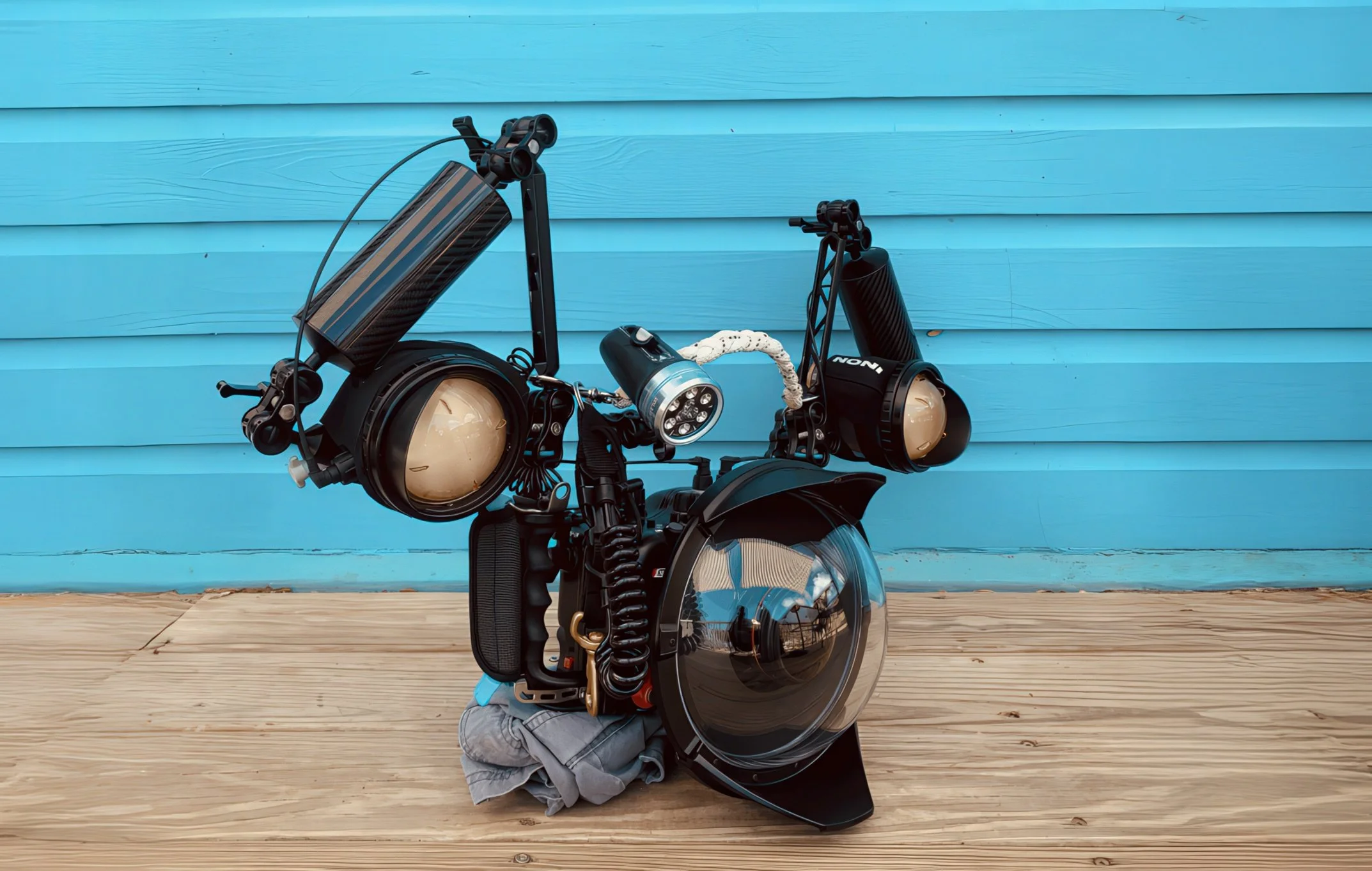What's in My Camera Bag: The Essential Underwater Photography Kit
There's a persistent myth in photography circles that great images require great cameras. It's a misconception that permeates not just our field, but every performance discipline—from music to sports to art. This product-focused mindset is largely fueled by manufacturers who benefit from creating endless user categories: aficionados, consumers, pro-sumers, professionals, serious professionals, commercial users, and so on.
Here's the truth: a skilled photographer can create magic with basic equipment, while even the most expensive gear won't save poor technique or vision. That said, when talent meets exceptional tools, something extraordinary happens.
After years of diving and shooting beneath the surface, I've carefully curated a kit that serves my underwater photography needs. Let me walk you through the tools that help me capture the ocean's stories.
Wide Angle Photography: My Underwater Workhorses
Wide-angle lenses are the backbone of underwater photography. Their ability to capture expansive scenes at close range minimizes the water column between photographer and subject—a crucial advantage when clarity and color are at stake. I rely on three distinct wide-angle setups, each serving different creative purposes.
Canon EF 8-15mm f/4.0L USM Wide Fisheye Zoom Lens
This lens is my go-to for dramatic underwater compositions. Paired with a 9" Sea & Sea dome port and mounted via a Sigma adapter, it excels at capturing massive subjects like whale sharks or manta rays while maintaining incredible detail. The fisheye distortion can be corrected in post-processing when needed, but often I embrace it for its immersive quality.
What makes this setup particularly versatile is its capability for split shots—those captivating half-underwater, half-surface images that reveal both worlds simultaneously. Whether I'm documenting a coral reef extending toward the surface or capturing a diver silhouetted against the sun, this combination delivers consistently stunning results.
Sony FE 28-60mm f/4-5.6 with Nauticam WWL-1B
Here's where things get interesting. The Sony 28-60mm isn't technically a wide-angle lens—until you add Nauticam's revolutionary Wet Wide Lens 1B. This water-contact optic transforms the setup into an incredibly sharp 130-degree wide-angle system that rivals purpose-built underwater lenses.
The beauty of this combination lies in its versatility. I can shoot the entire dive with one lens setup, moving seamlessly from wide environmental shots to tighter compositions simply by engaging or disengaging the WWL-1B underwater. The optical quality is exceptional, with edge-to-edge sharpness that makes post-processing a joy rather than a challenge.
Nikonos 15mm: The Legend
No underwater photographer's kit would be complete without acknowledging the legendary Nikonos 15mm. Introduced in 1984 for Nikon's V System, this lens commanded astronomical prices—and for good reason. Designed exclusively for underwater use, it delivers corner-to-corner sharpness that remains impressive by today's standards.
While it covers "only" 94 degrees compared to modern alternatives, its rectilinear design makes it indispensable for capturing human subjects underwater. The lack of fisheye distortion ensures divers and models appear natural and proportioned correctly, making it my preferred choice for underwater portraiture and video work. Yes, it's 100% manual—but after decades of use, that mechanical precision feels like an extension of my vision.
Macro Photography: When Details Matter
For macro work, I've made what some might consider an unconventional choice: using Canon's professional Red Ring lenses on my Sony system. This decision stems from practical considerations dating back to 2020 when I was assembling my current kit.
At the time, Sony's macro offerings were limited. Their 90mm was sharp enough, but the autofocus performance and overall integration weren't as refined as they are today. Rather than compromise, I invested in proven glass—specifically the Canon RF 100mm f/2.8 L Macro IS USM Lens.
This lens is extraordinarily sharp. While most macro lenses perform well, the Canon 100mm operates on another level entirely. I pair it with various diopters from Inon and Nauticam, which reduce the minimum focusing distance and allow me to work closer to skittish subjects—essential when photographing tiny nudibranchs or juvenile fish that spook at the slightest movement.
One technical note that's improved my macro work dramatically: I've started disabling the aperture live view effect on my camera. This keeps the viewfinder bright and clear while hunting for subjects, allowing me to spot and track tiny creatures more effectively in the often-challenging lighting conditions underwater.
Illumination
Inon Z330 System
Lighting underwater is everything. While camera technology advances at breakneck speed, strobe development moves more deliberately—making them a long-term investment worth getting right. My choice is the Inon Z330, a pair of them fitted with orange color diffusers.
Inon has built their reputation on consistency and reliability, qualities that matter immensely when you're 100 feet down and far from any camera store. The Z330s deliver powerful, even illumination with excellent color temperature control. The orange diffusers help restore warm tones that water naturally filters out, bringing life back to coral reefs and marine subjects.
These strobes have proven themselves through countless dives in conditions ranging from crystal-clear tropical waters to murky temperate seas. They're workhorses that perform when it matters most.
The Journey Continues
This kit represents just the foundation of my underwater imaging arsenal. Beyond these primary tools, my collection includes compact backup systems, a complete range of Nikonos film cameras with their corresponding lenses and strobe systems, and various specialized accessories that have accumulated over decades of underwater exploration.
Equipment choices in underwater photography are deeply personal, shaped by individual shooting styles, target subjects, and the specific challenges of your local diving conditions. What matters most isn't having the most expensive gear, but understanding your tools intimately and pushing their capabilities to serve your creative vision.
The ocean doesn't care about your camera specifications—it only responds to your ability to see, anticipate, and capture the fleeting moments of beauty that unfold beneath the waves.

